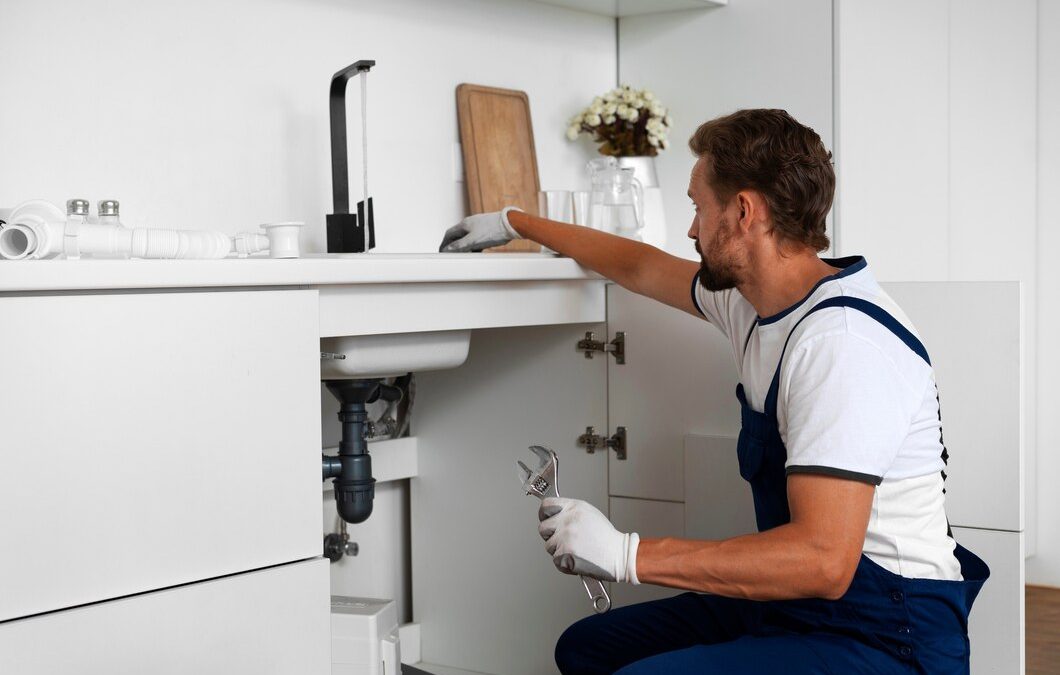Your home’s plumbing system works hard every day to deliver water and remove waste efficiently. Yet, it’s easy to forget about its care until something goes wrong. Regular plumbing inspections are important because they help catch issues early before they become major headaches.
Understanding when and how often to inspect your plumbing can save you from costly repairs and unexpected problems. Dive into this guide to discover the best practices for keeping your plumbing in top shape.
Key Signs That Indicate Plumbing Inspection Needs
Recognizing when your home needs a plumbing inspection is crucial in maintaining a healthy system. By paying attention to certain signs, you can detect problems early and address them before they escalate. Here are some common indicators that it’s time to inspect your plumbing:
1. Water Discoloration: If your water appears brown or rusty, it may signify corrosion in pipes or issues with your water heater. This needs immediate attention to safeguard water quality.
2. Low Water Pressure: Persistent low pressure in faucets or showers can hint at clogged pipes, leaks, or problems in the main water line. Early investigation can help pinpoint and resolve these issues.
3. Unusual Sounds: Hearing banging or whistling noises when using pipes is not normal and may suggest blockages or air trapped in the plumbing system. Checking helps prevent these from affecting other areas.
4. Slow Drainage: If sinks or tubs drain slower than usual, it could mean there’s a clog forming. Resolving this early is simpler than dealing with a complete blockage later on.
5. Elevated Water Bills: A sudden spike in your water bill without increased usage can indicate a hidden leak. Inspecting your plumbing can identify and fix leaks, saving you money.
6. Wet Spots on Walls or Ceilings: These could signal a hidden leak within the pipes. Ignoring these spots may lead to significant water damage and mold growth.
Recommended Inspection Frequency for Different Plumbing Elements
Knowing how often to check various parts of your plumbing system keeps everything in working order. Different elements require inspections at different intervals. Let’s look at a recommended schedule:
1. Water Heaters: Inspect annually to ensure efficiency and safety. Regular checks can reveal sediment buildup, which impacts performance.
2. Pipes: Give pipes a look-over twice a year for leaks, rust, or corrosion. This helps you catch any issues before they worsen.
3. Drains: Monthly checks for slow drainage or clogs are advisable. Keep drains clean to maintain proper water flow and prevent backups.
4. Faucets and Fixtures: Look for leaks or wear every few months. Address drips promptly to conserve water and reduce your bill.
5. Toilets: Inspect fittings and flush mechanisms biannually to ensure everything functions as it should, avoiding potential overflows or constant running.
6. Septic Systems: If your home uses a septic system, a professional inspection every three to five years will help ensure it operates effectively.
DIY Plumbing Checks Homeowners Can Perform
Taking a peek at your plumbing can help catch small issues before they become big problems. There are several checks you can do yourself to keep your system in good shape. Here’s a list of simple plumbing checks that any homeowner can handle:
1. Check for Leaks: Regularly look under sinks and around appliances for signs of moisture. A catch here saves you headaches later.
2. Inspect Faucet Flow: Turn on faucets to ensure they all have steady pressure. If not, you might have a clog or mineral buildup.
3. Examine Pipe Connections: Look at the joints for any signs of corrosion or leaks. Tighten connections if needed.
4. Test Drains: Allow water to flow through sinks and tubs. Watch for slow drainage, indicating potential blockages.
5. Toilet Functionality: Flush toilets to ensure they empty and refill properly. Listen for constant running or incomplete fills.
6. Water Heater Check: Listen for strange sounds or leaks around the heater. Make sure it’s heating properly.
When to Schedule Professional Plumbing Inspections
While DIY checks are useful, some plumbing problems require a professional touch. Knowing when to call in the experts keeps your system in top condition. Here are situations where scheduling a professional inspection is wise:
1. Recurring Clogs: If clogs are frequent, there might be a bigger issue that only a professional can fix.
2. Persistent Low Water Pressure: Unexplained low pressure across your home needs a thorough check. It might indicate a significant blockage or mainline trouble.
3. Major Remodels: If you’re planning renovations, involve a plumber to ensure all plumbing elements are properly adjusted or updated.
4. Old Pipes: Homes with aging pipes benefit from routine professional reviews to prevent potential breakdowns or leaks.
5. Sewer System Concerns: Any sewer odors or backups require immediate professional investigation for proper diagnosis and repair.
6. Annual Routine Check: Even without visible problems, an annual inspection helps ensure all systems run well and catch unknown issues early.
Conclusion
Good plumbing care involves knowing when to conduct checks and when to call the experts. Routine DIY checks combined with professional inspections help maintain a trouble-free plumbing system.
Being attentive to your plumbing’s health preserves water efficiency and prevents the stress of emergency repairs. Regular attention ensures that both minor fixes and major issues are handled swiftly and effectively so your home remains a comfortable haven.
For top-notch plumbing services, Midlothian Plumbing is here to support you. When you face an issue or need an expert inspection, reach out to us today. Our team is ready to provide the care and expertise your home deserves. Let us ensure your plumbing system remains reliable, giving you peace of mind.


